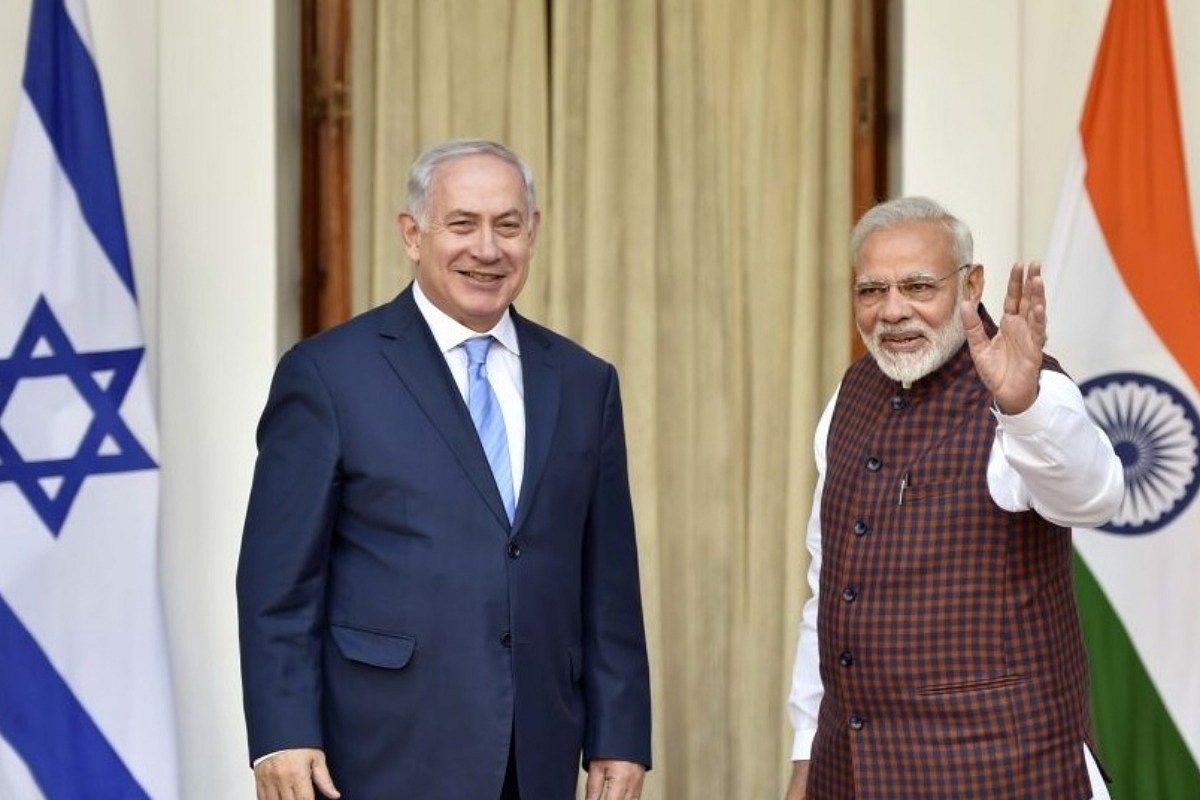Economy
Israel And Canada Quandary — What's At Stake For India's Trade Amidst Middle East Conflict And Diplomatic Row

Israeli Prime Minister Benjamin Netanyahu(L) with PM Narendra Modi. (File Photo) (Ajay Aggarwal/Hindustan Times via Getty Images)
The turmoil in the Middle East is not going to end soon, by any measure.
Israel is unlikely to stop till it breaks the back of Hamas. The next target might be Hezbollah — the force behind Hamas' 7 October terror attack.
Such actions will have an economic cost. Volatility in crude prices is a widely anticipated outcome. Delhi, though, has an added concern — how will the conflict impact India-Israel trade?
As of 2022, India was the seventh-largest exporter to Israel and second largest from Asia. A negative impact on Israel’s trade outlook would, therefore, prove costly for India.
The impact will be particularly costly coming on the back of the India-Canada diplomatic row, which is also likely to impact trade, if not in goods, then services definitely.
India has broad-spectrum relations with both Israel and Canada. Together, they generated a positive trade balance in India’s favour in 2022-23 (FY23). Exports to both destinations have been growing at a faster pace than India’s total exports.
Considering the generally subdued global trade, any loss in export opportunity may not be compensated.
Together with potential volatility in crude prices and the looming threat of a rate hike by the United States Federal Reserve, the impending situation may add sufficient pressure on India’s forex reserve, which is at a five-month low.
Trade Opportunities
With India, Canada is less on goods trade and more on investments. According to Ottawa, the Canadian pension fund investments in India stood at $21 billion in 2022. The diplomatic row is yet to impact this area.
According to India’s Commerce Ministry, bilateral trade stood at $8.1 billion in FY23 with a positive surplus of $85 million in India’s favour. India’s exports to Canada grew by 9.19 per cent compared to 6.86 per cent in total exports.
Though still small in value, India’s smartphone exports to Canada increased 20 times, from $5 million to $109 million, between FY22 and FY23. As of the June quarter of FY24, smartphone exports stood at $74 million.
The diplomatic row with Canada erupted in September. There is no major impact on India-Canada goods trade yet. However, services exports should suffer due to visa restrictions.
Notably, services helped India shore up export revenues in FY23, despite a slowdown in global merchandise trade.
Meanwhile, to start with, expectations are rife that the fast-growing Israeli investments in India’s real estate sector may suffer.
Tel Aviv has been investing in real estate-focused funds in India since 2015-16. The current annual flow is to the tune of $30 million and growing by 20-30 per cent a year.
In trade, Indian exports to Israel grew from $3.7 billion to $8.4 billion in the last five fiscal years. The exports grew at a phenomenal 76-77 per cent over the last two years. India’s trade surplus grew from $1.7 billion to $6.1 billion in five years.
Three of India’s top five export items to Israel are manufactured and two — radar apparatus and parts and accessories of weapons — are directly or indirectly linked to the defence sector. Both items are witnessing superfast growth. Smartphone exports are also zooming.
It is not clear which way India-Israel trade will move in the aftermath of Hamas' terror attack on Israel. There is a possibility that the counter-offensive might require more imports. There is also a possibility that Israel will prioritise spending.
Impact on Forex Reserve
India’s forex reserve has dropped for the fifth straight week.
Trade issues apart, the failure of the rupee trade proposition may prove a critical reason behind the pressure on the forex reserve this year.
In 2022-23, India purchased crude from Russia through the age-old rupee-ruble arrangement. As the rupee is non-tradable in the global market, Russia ended up with a stockpile of unusable currency.
As of FY24, Moscow not only dumped the idea but reportedly invited Delhi to pay in Chinese yuan, a tradable currency. On the brighter side, Russia has resumed deep discounts on crude prices.
Notably, both Russia and China proposed yuan-based trade in the Shanghai Cooperation Organisation (SCO) meeting last year.
The issue came up again during the recently held BRICS summit. (BRICS is a grouping of Brazil, Russia, India, China, and South Africa.)
It is difficult for India to agree to the proposal for more reasons than one. Naturally, Delhi has been rejecting the idea. What is missing, though, is a sustainable solution.
Ideally, a move towards convertibility of the rupee is the only option available to Delhi to reduce dependence on the dollar. However, that may not happen soon.
The generally conservative Reserve Bank of India (RBI) spiked such ideas in the past. It may not look to take chances in the current global scenario.
Support Swarajya's 50 Ground Reports Project & Sponsor A Story
Every general election Swarajya does a 50 ground reports project.
Aimed only at serious readers and those who appreciate the nuances of political undercurrents, the project provides a sense of India's electoral landscape. As you know, these reports are produced after considerable investment of travel, time and effort on the ground.
This time too we've kicked off the project in style and have covered over 30 constituencies already. If you're someone who appreciates such work and have enjoyed our coverage please consider sponsoring a ground report for just Rs 2999 to Rs 19,999 - it goes a long way in helping us produce more quality reportage.
You can also back this project by becoming a subscriber for as little as Rs 999 - so do click on this links and choose a plan that suits you and back us.
Click below to contribute.
Latest